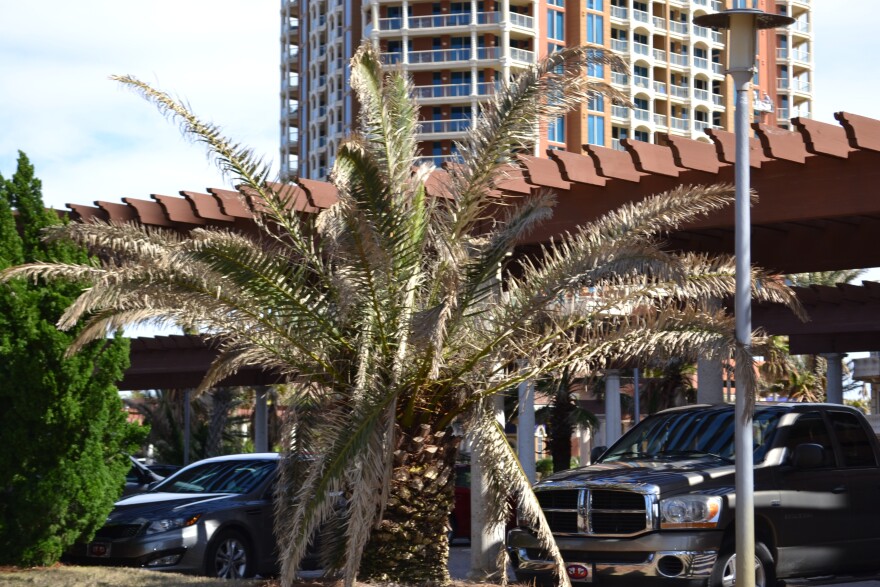Residents in Northwest Florida and South Alabama need look no further than their yards to see evidence of this year’s harsh winter, including the extended hard freeze of Winter Storm Leon at the end of January. But, with spring around the corner, people across the region are beginning the process of getting their yards in shape and probably wondering what to do about those cold damaged, brown palms.
For some expert advice, we’ve turned to Beth Bolles, horticultural agent with the Escambia County Extension Service, University of Florida/Institute of Food and Agricultural Sciences (UF/IFAS). Bolles and Jonathon Heidi, director of video services at WUWF Public Media, are the long-time hosts of the program “Southern Gardening” on WUWF TV (Cox Cable Channel 4).
What to do about winter weeds?
Bolles: Most of those are going to die, because we’re transitioning to the summer season. But, right now, residents should be thinking about a pre emergent herbicide for some of the summer weeds, such as crabgrass, that will be annuals. The most common herbicide pendimethalin or dithiopyr (also sold as Dimension). The herbicide should be applied to the lawn or ornamental beds to help kill the developing seed of the weed. The key with any herbicide is not to over water after application or apply it before a heavy rain.

What about cold damaged palms?
Bolles: The key for many varieties of palms is to wait to see what happens later this spring. There are some palms, such as Washingtonia or Canary palms, that have no green on any of the fronds and are completely dead.
However, there are other palms that have a little bit of green coming out of the middle. If that’s the case, it’s imperative to leave the green on the plant. Only prune fronds, leaflets and petioles (or stems) that are completely brown. By not removing any of the green, the plant can make food for itself - and hopefully recover - as the season moves along.
For more information, call the University of Florida/Institute of Food and Agricultural Sciences (UF/IFAS) Extension Service office at (850) 475-5230 or visit their website: http://escambia.ifas.ufl.edu.
Send questions to Jonathon Heidi at jheidi@uwf.edu.

